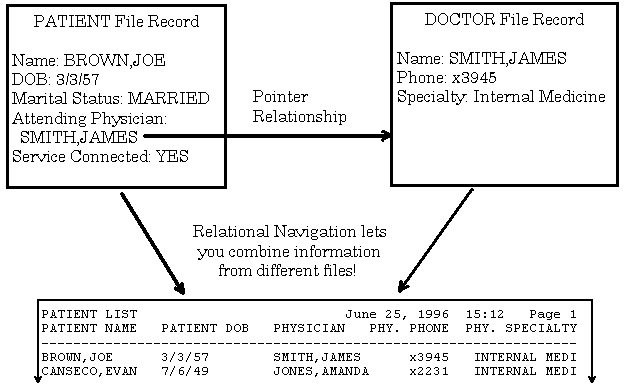
| Contents: | Main | Chapter | See Also: | Getting Started Manual | Programmer Manual | |||
Relational navigation gives you a way to reach beyond the current file to reference fields within other files.
Suppose, for example, you are doing a printout from the PATIENT file. In the PATIENT file, there is a pointer to the DOCTOR file. This links a given patient to a given doctor. But the only information about the doctor available from the point of view of the PATIENT file is the doctor's name. What if, in your printout, you want to print the doctor's name, phone number, and specialty (where phone number and specialty are fields in the DOCTOR file)?
The answer is to use relational navigation. By using the pointer relationship between the PATIENT and the DOCTOR file, you can start from the PATIENT file, and for each record in the PATIENT file, retrieve not only the name of the doctor for that patient, but also additional information about the doctor from the DOCTOR file.

You can use relational navigation in many places in VA FileMan to move beyond the current file and retrieve or edit information in related files' records, including:
The syntax to perform relational navigation, called Extended Pointer syntax, is discussed throughout this chapter.
Several types of pointer relationships between files can be exploited to combine information:
A special form of relational navigation, called relational jumping, uses these pointer relationships to let you "jump" from one file to another. This makes it easier to specify a group of fields from another file when specifying what fields to edit, search, print, or sort by in interactive VA FileMan.
Reviewed/Updated: March 4, 2007